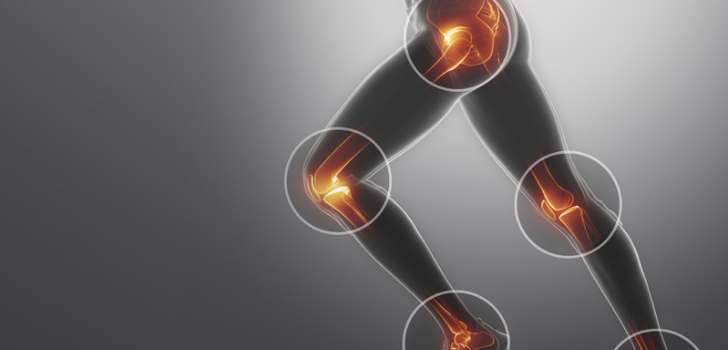1.- What is an Overuse Injury?
An overuse injury is a term used to describe an injury that occurs from tissue damage resulting from repetitive demand over a period of time rather than an acute injury such as a shoulder dislocation or an ankle sprain.
These injuries can involve the muscle-tendon unit, bone, bursa, and neurovascular structures.
2.- What are the most common overuse injuries?
🔘 Runner’s knee. Medically known at patellofemoral pain, runner’s knee is the most highly diagnosed condition at sports clinics nationwide. The primary symptoms include a burning pain in between the knee cap and thigh bone. The best way to deal with runners knee is wearing proper footwear and ensuring that you have a proper gait when running.
🔘 Achilles tendinitis. This is a severe pain in the back of the ankle, at the tendon that attaches the calf muscles to the heel bone. This is a slow-healing injury and will require some support from special insoles. This is another injury especially common among runners.
🔘 ITBS. Medically known as Iliotibial band syndrome, this is another injury that affects runners, but also commonly affects cyclists and weightlifters. ITBS is the most common injury to cause lateral pain. The Iliotibial band runs from the hip to just below the knee. Another slow-healing injury, this injury may require a special kind of shoe to support balance and alleviate pain.
🔘 Shin splints. This is the common name for the medical condition known as medial tibial stress syndrome. It affects the front of the calves (the shins) and causes a series of small tendinitis and stress fractures. Runners often develop shin splints when their shoes are not offering enough padding and their shins are absorbing too great of shock.
🔘 Plantar fasciitis. A common foot injury, this is known to affect athletes from the high school level all the way to the professionals. This is the inflammation of a thick fibrous tissue in the part of the foot called the plantar fascia.
3.- What Are the Signs & Symptoms of Overuse Injuries?
🔴 tingling, numbness, or pain in the affected area.
🔴 stiffness or soreness in the neck or back.
🔴 feelings of weakness or fatigue in the hands, arms, or legs.
🔴 popping or clicking sensation.
4.- What are the four stages of an overuse injury?
🟡 Pain in the affected area after physical activity.
🟠 Pain during physical activity, not restricting performance.
🔴 Pain during physical activity, restricting performance.
🟣 Chronic, persistent pain, even at rest.
5.- How do you treat overuse injury?
✅ Medicine.
✅ Activity restrictions.
✅ Splint or cast.
✅ Crutches or wheelchair.
✅ Physical therapy (to stretch and strengthen the injured muscles, ligaments, and tendons)
✅ Surgery (especially if the injury is reoccurring, there is persistent pain, or if a muscle, tendon, or ligament is badly torn)
6.- How long does it take for overuse injuries to heal?
It can take up to 12 months before you can go back to your regular sports activities. Assertive medical diagnosis and Physical therapy are important throughout this recovery period
7.- What are some possible causes of an overuse injury?
An overuse injury is any type of muscle or joint injury, such as tendinitis or a stress fracture, that’s caused by repetitive trauma. An overuse injury typically stems from:
❌ Training errors. Training errors can occur when you take on too much physical activity too quickly. Going too fast, exercising for too long or simply doing too much of one type of activity can strain your muscles and lead to an overuse injury.
❌ Technique errors. Improper technique also can take its toll on your body. If you use poor form as you do a set of strength training exercises, swing a golf club or throw a baseball, for example, you may overload certain muscles and cause an overuse injury.
8.- How to avoid overuse injury
👉 Use proper form and gear. Whether you’re starting a new activity or you’ve been playing a sport for a long time, consider taking lessons. Using the correct technique is crucial to preventing overuse injuries.Also make sure you wear proper shoes for the activity. Consider replacing your shoes for every 250 to 500 miles you walk or run — or at least twice a year if you regularly exercise.
👉 Pace yourself. If you’re starting a new fitness program, avoid becoming a weekend warrior. Compressing your physical activity for the week into two days can lead to an overuse injury.Instead, aim for at least 30 minutes of moderate physical activity a day. If you don’t have time for a full 30 minutes, you can break it down into smaller blocks of activity throughout the day. It’s also a good idea to take time to warm up before physical activity and cool down afterward.
👉 Gradually increase your activity level. When changing the intensity or duration of a physical activity, do so gradually. For example, if you want to increase the amount of weight you’re using while strength training, increase it by no more than 10 percent each week until you reach your new goal.
👉 Mix up your routine with cross-training. Instead of focusing on one type of exercise, build variety into your fitness program. Incorporating a variety of low-impact activities — such as walking, biking, swimming and water jogging — can help prevent overuse injuries by allowing your body to use different muscle groups and not overload any one particular group.And be sure to include strength training for the major muscle groups in your arms, legs and core at least twice a week.
![]() 𝘛𝘩𝘪𝘴 𝘪𝘯𝘧𝘰𝘳𝘮𝘢𝘵𝘪𝘰𝘯 𝘪𝘴 𝘧𝘰𝘳 𝘦𝘥𝘶𝘤𝘢𝘵𝘪𝘰𝘯𝘢𝘭 𝘱𝘶𝘳𝘱𝘰𝘴𝘦𝘴 𝘰𝘯𝘭𝘺; 𝘯𝘰 𝘪𝘯𝘧𝘰𝘳𝘮𝘢𝘵𝘪𝘰𝘯 𝘪𝘴 𝘪𝘯𝘵𝘦𝘯𝘥𝘦𝘥 𝘰𝘳 𝘪𝘮𝘱𝘭𝘪𝘦𝘥 𝘵𝘰 𝘣𝘦 𝘢 𝘴𝘶𝘣𝘴𝘵𝘪𝘵𝘶𝘵𝘦 𝘧𝘰𝘳 𝘱𝘳𝘰𝘧𝘦𝘴𝘴𝘪𝘰𝘯𝘢𝘭 𝘮𝘦𝘥𝘪𝘤𝘢𝘭 𝘢𝘥𝘷𝘪𝘤𝘦.
𝘛𝘩𝘪𝘴 𝘪𝘯𝘧𝘰𝘳𝘮𝘢𝘵𝘪𝘰𝘯 𝘪𝘴 𝘧𝘰𝘳 𝘦𝘥𝘶𝘤𝘢𝘵𝘪𝘰𝘯𝘢𝘭 𝘱𝘶𝘳𝘱𝘰𝘴𝘦𝘴 𝘰𝘯𝘭𝘺; 𝘯𝘰 𝘪𝘯𝘧𝘰𝘳𝘮𝘢𝘵𝘪𝘰𝘯 𝘪𝘴 𝘪𝘯𝘵𝘦𝘯𝘥𝘦𝘥 𝘰𝘳 𝘪𝘮𝘱𝘭𝘪𝘦𝘥 𝘵𝘰 𝘣𝘦 𝘢 𝘴𝘶𝘣𝘴𝘵𝘪𝘵𝘶𝘵𝘦 𝘧𝘰𝘳 𝘱𝘳𝘰𝘧𝘦𝘴𝘴𝘪𝘰𝘯𝘢𝘭 𝘮𝘦𝘥𝘪𝘤𝘢𝘭 𝘢𝘥𝘷𝘪𝘤𝘦.



